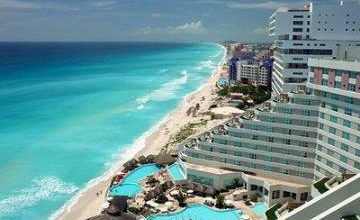Van Hool’s Contributions to Cleaner Air and Reduced Carbon Footprint

Van Hool’s Contributions to Cleaner Air and Reduced Carbon Footprint
Why is Van Hool leading the way in eco-friendly transportation?
Van Hool, a renowned manufacturer of buses, coaches, and industrial vehicles, has been at the forefront of adopting green technologies and reducing carbon emissions in the transportation industry. With a strong commitment to environmental sustainability, Van Hool has made significant contributions to cleaner air and a reduced carbon footprint.
1. Introduction of Electric and Hybrid Vehicles
Van Hool has been instrumental in developing and introducing electric and hybrid vehicles that operate with significantly reduced carbon emissions. By harnessing advanced technologies, Van Hool has successfully created buses and coaches that run on electric power or a combination of electricity and traditional fuels. These vehicles provide a cleaner alternative to conventional diesel-powered vehicles, reducing both air pollution and the carbon footprint.
Electric Buses
Van Hool’s electric buses are powered by electricity stored in on-board batteries. These buses emit zero tailpipe emissions, offer a quieter and smoother ride, and significantly reduce greenhouse gas emissions. With advancements in battery technology, Van Hool’s electric buses now have extended range capabilities, making them suitable for longer routes.
Hybrid Buses
Van Hool’s hybrid buses combine traditional diesel engines with electric propulsion systems. This combination allows for reduced fuel consumption and emissions compared to conventional diesel buses. By utilizing regenerative braking and engine start/stop functionality, these buses optimize energy usage and reduce carbon emissions, making them a greener choice for public transportation.
2. Alternative Fuel Technologies
In addition to electric and hybrid vehicles, Van Hool has also embraced alternative fuel technologies that further contribute to reducing carbon emissions.
Natural Gas-Powered Buses
Van Hool offers buses that are powered by compressed natural gas (CNG) or liquefied natural gas (LNG). These buses produce significantly lower emissions compared to traditional diesel-powered buses. By utilizing natural gas as a fuel source, Van Hool’s buses help to reduce greenhouse gas emissions and improve air quality.
Frequently Asked Questions (FAQs)
Q: Are Van Hool’s electric buses suitable for long-distance travel?
A: Yes, Van Hool has made significant advancements in battery technology, allowing their electric buses to have extended range capabilities. These buses are suitable for both short-distance and long-distance travel.
Q: How do Van Hool’s hybrid buses reduce carbon emissions?
A: Van Hool’s hybrid buses combine traditional diesel engines with electric propulsion systems. By utilizing regenerative braking and engine start/stop functionality, these buses optimize energy usage and reduce carbon emissions compared to conventional diesel buses.
Q: Do Van Hool’s natural gas-powered buses have the same performance as diesel-powered buses?
A: Yes, Van Hool’s natural gas-powered buses provide similar performance to their diesel counterparts. They offer the same level of comfort, reliability, and efficiency while significantly reducing emissions and improving air quality.
Conclusion
Van Hool’s commitment to reducing carbon emissions and providing cleaner air through their innovative electric, hybrid, and alternative fuel technologies is commendable. By continuously pushing the boundaries of eco-friendly transportation, Van Hool sets an example for other manufacturers to follow. With their efforts, we can hope for cleaner and greener urban mobility systems in the future.
By choosing Van Hool’s eco-friendly transport solutions, we can contribute to a sustainable future while enjoying comfortable and efficient transportation options.



